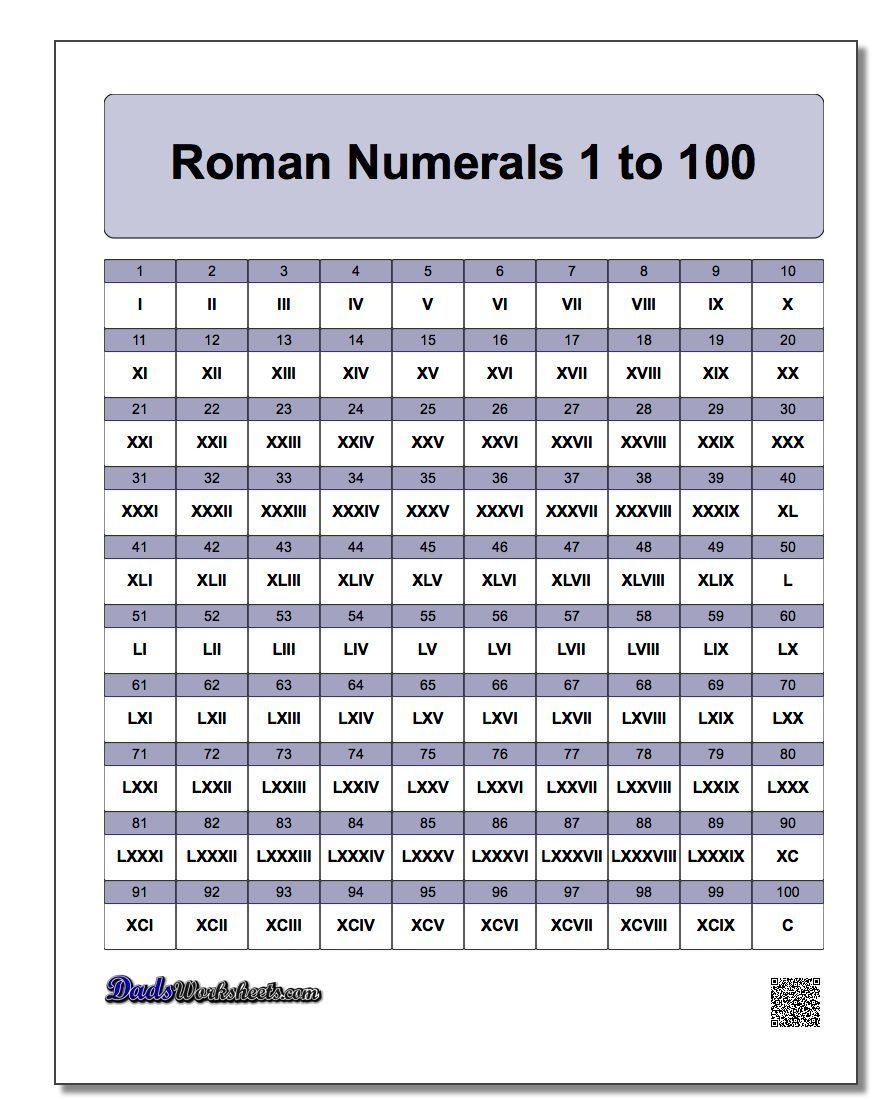If you’re looking to learn about Roman numerals, you’re in luck! We’ve got a fantastic resource for you. Our Roman Numerals Chart is a comprehensive guide to these ancient numeric symbols, and it’s available to you completely free of charge.
What are Roman Numerals?
Roman numerals are a numeral system that originated in ancient Rome and were used throughout the Roman Empire. They’re made up of a series of letters and symbols, each of which represents a different number. The letters used in Roman numerals are I, V, X, L, C, D, and M.
The letters and symbols are combined in different ways to represent different numbers, and understanding these combinations is the key to understanding Roman numerals.
How to Read Roman Numerals
Reading Roman numerals can seem daunting at first, but with a little practice, it’s actually quite simple. Here’s a quick guide:
- I represents the number 1
- V represents the number 5
- X represents the number 10
- L represents the number 50
- C represents the number 100
- D represents the number 500
- M represents the number 1,000
When these letters are combined, they create larger numbers. For example, the number 2 is represented by the Roman numeral II (two I’s), and the number 3 is represented by III (three I’s).
Here are a few more examples:
- 4 is represented as IV (one less than 5)
- 9 is represented as IX (one less than 10)
- 40 is represented as XL (10 less than 50)
- 90 is represented as XC (10 less than 100)
- 400 is represented as CD (100 less than 500)
- 900 is represented as CM (100 less than 1,000)
With these basic rules in mind, you’ll be able to read Roman numerals in no time.
Using our Roman Numerals Chart
Our Roman Numerals Chart is a handy reference guide that you can use to quickly look up Roman numerals. It includes all of the numbers from 1 to 1,000, as well as some additional information about Roman numerals.
Let’s take a closer look at how to use the chart:
Step 1: Find the Number
Start by finding the number you want to convert to Roman numerals. The numbers are listed in numerical order from 1 to 1,000.
Step 2: Identify the Symbols
Once you’ve found the number, you’ll see the corresponding Roman numerals listed in the chart. Each number has its own unique set of Roman numerals, so make sure you’re looking at the correct set.
Step 3: Combine the Symbols
Use the rules we discussed earlier to combine the Roman numeral symbols to create the number you’re looking for. For example, if you want to convert the number 47 to Roman numerals, you would use the symbols XLVII (10 less than 50, plus 5 less than 10, plus 1 less than 5, plus 1).
Our Roman Numerals Chart makes it easy to convert any number to Roman numerals. Simply follow the steps we just outlined, and you’ll be a pro at reading and writing Roman numerals in no time.
Other Uses for Roman Numerals
While Roman numerals may no longer be commonly used for everyday calculations, they still have a number of other uses. Here are a few:
- In clock faces: Roman numerals are often used to represent the hours on a clock face. This gives the clock a classic, old-world feel.
- In book and chapter numbering: Roman numerals are still used in some books and other publications to number chapters and sections. This is especially common in works of history and literature.
- In movie credits: Roman numerals are often used in movie credits to indicate the year of the film’s release. This is a nod to the historical origins of cinema.
These are just a few examples of how Roman numerals are still used today. While they may not be as common as they once were, they’re still an important part of our cultural heritage.
Conclusion
Our Roman Numerals Chart is the perfect resource for anyone who wants to learn about these ancient symbols. With our chart and a little bit of practice, you’ll be reading and writing Roman numerals like a pro in no time.
 So why wait? Download our chart today and start exploring the fascinating world of Roman numerals!
So why wait? Download our chart today and start exploring the fascinating world of Roman numerals!